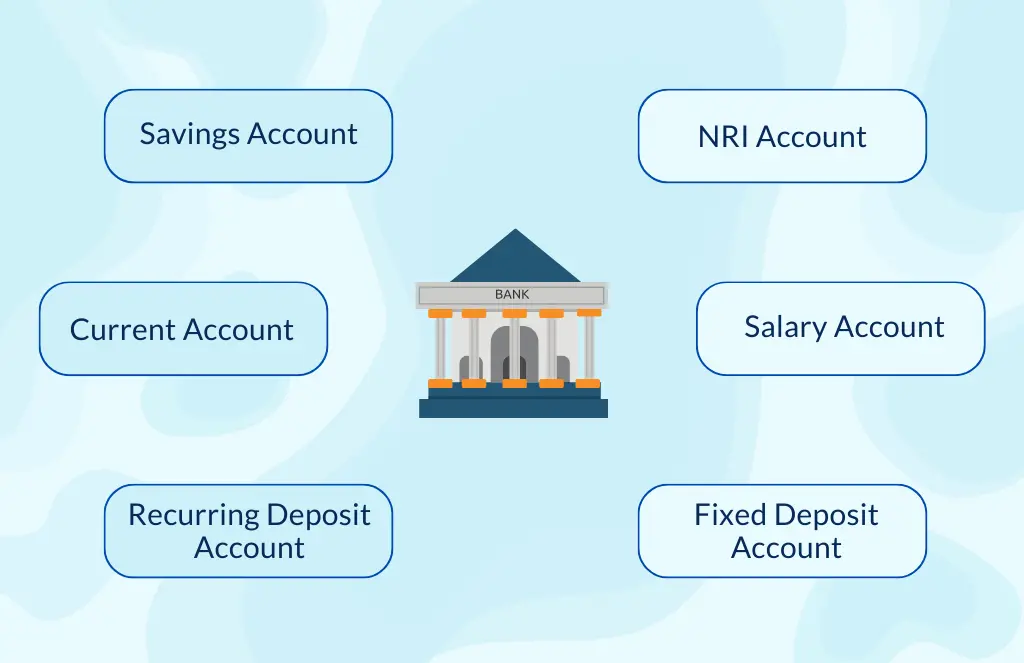Convince customers to open a bank account over a call can be challenging yet exciting. As a banker, mastering the art of telecalling techniques and crafting personalized pitches is crucial for success. So, grab your phone and get ready to dial your way to victory!
But why is it important to excel at convincing customers on a call? In a world filled with digital distractions and countless options, getting someone to commit to opening a bank account over the phone is not easy. You need to capture their attention, spark their interest, and win their trust, all within a phone conversation.
Finance can seem complex and severe, but fear not! We'll navigate through it with charm, making the whole experience enjoyable for you and your potential customer.
Did you know that according to Statista, by 2024, around 2.5 billion people worldwide are projected to use digital banking? This statistic shows the growing popularity and importance of banking in the digital age. It's crucial to adapt your telecalling techniques accordingly.
So, put on your best "phone voice," and let's dive into the magical world of telecalling techniques that will make even the most skeptical customers say, "Yes, sign me up!"
In the upcoming sections, we'll explore effective strategies, persuasive language, and real-life scenarios that will help you conquer the customer conversion game. We'll cover everything from building rapport to highlighting the benefits of having a bank account. Enable your telecalling skills and witness customers eagerly join the banking revolution!
Stay tuned, and we'll delve into building rapport and establishing customer trust.
Mistakes to Avoid on a Call
(Source: www.tenor.com)
When trying to convince customers to open a bank account over a call, It's important to be aware of common mistakes that can hinder your success. Avoiding these pitfalls will help you establish a positive and productive conversation and increase the likelihood of converting more customers. Here are some crucial mistakes and valuable tips to follow,
Refrain from needing to build rapport and feel detached. Building rapport is the first step in any successful customer conversation. Initially, greet the customer warmly and introduce yourself with a friendly tone. Show genuine interest in their needs and preferences, actively listen to their concerns and find common ground.
Maintaining a professional tone is equally important. Being too casual and informal can undermine your credibility and diminish your seriousness. Speak clearly and confidently, using a professional tone that is easily understandable. Avoid technical terms that may confuse the customer. Dress professionally, even though the customer can't see you, as it can positively impact your mindset.
Adopting a pushy or aggressive approach with customers is counterproductive and creates resistance. Instead, focus on providing valuable information and guiding customers through decision-making.
Ignoring customer concerns is a critical mistake. Addressing their questions and objections is crucial in building trust and confidence. Respond promptly and provide clear, concise answers to address their queries.
If you don't have an immediate response, assure them you will investigate and follow up with accurate information. Showing that their concerns matter to you demonstrates your commitment to their satisfaction.
It will be better equipped to convince customers over a phone by avoiding these common mistakes and implementing these tips.
Crafting an Effective Calling Script
(Source: www.tenor.com)
Having a well-crafted calling script becomes essential. A calling script is a valuable tool in guiding the conversation and ensuring you effectively communicate the key features and benefits of opening a bank account. It provides structure, consistency, and clarity to your message.
A well-crafted calling script is vital for several reasons. Firstly, it enables structured and consistent communication. With a script, you have a predefined framework that ensures you cover all the essential aspects of the bank account offering during the call. It helps you maintain a logical flow and prevents missing important information.
Secondly, a calling script allows for clear and concise messaging. By preparing your message in advance, you can communicate clearly and concisely. It helps you avoid rambling or going off-topic, enabling you to deliver a focused and impactful message to the customer.
By having a script, you approach the call with confidence, knowing that you have the necessary information and prompts to handle customer questions and objections effectively. This preparedness enhances your credibility and trustworthiness, making a positive impression on the customer.
There are some guidelines to follow. Firstly, it's crucial to understand your target audience. Research and gather insights about their needs, preferences, and pain points. Tailor your script to address their concerns and highlight the features and benefits that resonate with them.
Next, start your script with a compelling introduction. Grab the customer's attention from the start and clearly state the purpose of the call. Personalize the introduction based on the available information about the customer to make it more engaging and relevant to their needs.
Highlight the key features and benefits of opening a bank account in your script. Identify what sets your offering apart and clearly articulate these points. Emphasize how your bank account meets the customer's financial goals and offers convenience, security, and growth opportunities.
Anticipate and address potential customer questions and objections by preparing well-crafted responses in your script. Think about the common concerns they may have and provide persuasive answers that build confidence and alleviate doubts.
Finally, while a script provides structure, strive to maintain a conversational tone during the call. Use natural language and avoid sounding robotic or overly scripted. Allow flexibility to adapt to the customer's responses and engage in a meaningful dialogue.
By following these guidelines and creating an effective calling script, you can guide the conversation toward successfully convincing customers to open a bank account.
Step-by-Step Approach on the Call
(Source: www.tenor.com)
Step 1: Confirming Customer Details
Verifying customer information is essential to ensure accuracy and avoid any potential misunderstandings. By double-checking their name, contact information, and any specific requirements they may have mentioned, you demonstrate professionalism and attention to detail.
This confirmation process ensures that you have the correct information to proceed with the conversation and gives the customer confidence that their needs will be addressed accurately.
Assure the customer that their personal information is handled securely and by applicable regulations. Confirming customer details and emphasizing data protection sets the stage for a secure and trustworthy interaction, positioning you as a reliable bank representative.
Step 2: Assessing the Right Time to Talk
Timing plays a significant role in a successful conversation. Identify a suitable time for the customer to discuss opening a bank account. Respect their schedule and acknowledge that their time is valuable.
When assessing the right time to talk, it's important to approach the customer sensitively. You can politely ask if it is an excellent time to discuss the bank account, ensuring they have the time and attention to give to the conversation.
You can give them the option to reschedule if necessary. Demonstrating consideration for their availability enhances the chances of a more receptive conversation. This approach shows that you value their time and are committed to providing a quality service tailored to their needs.
Step 3: Introducing and Providing a Reference
It is essential to establish a personal connection and build credibility. Introducing yourself and clearly stating your role in the bank helps create a sense of trust and professionalism. Providing this information upfront sets the stage for a more engaging and productive conversation.
Offering a reference can have significant benefits in winning over the customer. Mentioning any mutual connections or positive customer experiences can enhance your credibility and create a sense of familiarity. Customers are more likely to feel comfortable and confident in your bank when they know others have had positive experiences.
By introducing yourself and providing a reference, you establish a personal connection and build trust with the customer. It paves the way for a more effective conversation, increasing the likelihood of convincing them to open a bank account.
Step 4: Personalizing the Pitch
Personalizing your pitch to customers' specific needs and interests is crucial when convincing them to open a bank account on call. Personalization demonstrates that you understand their unique financial goals and requirements, making your pitch more relevant and compelling.
To personalize the pitch, conducting thorough research on the customer's financial goals, preferences, and banking requirements is key.
This information can be obtained from previous interactions, customer profiles, or even publicly available data.
Understanding their financial situation allows you to highlight the specific benefits and features of the bank account that align with their needs. By showcasing how the report can help them achieve their goals or fulfill their banking preferences, you create a stronger case for them to open an account with your bank.
By emphasizing the importance of personalization and providing tips for researching customer information, you can enhance your ability to deliver a tailored pitch that resonates with the customer.
Building Trust and Overcoming Objections
(Source: www.tenor.com)
Building trust is fundamental to convincing customers to open a bank account. It establishes a foundation of credibility and reliability. Transparent communication and addressing customer concerns play a vital role in establishing trust.
Here, we will discuss the significance of building trust and provide strategies for effectively addressing common objections.
- Trust: Trust is the foundation of any successful customer relationship. By fostering trust, you instill confidence in customers that their financial interests are safe. Transparent communication is key to building trust.
Be open, honest, and provide accurate information about the bank's offerings, services, and policies. Addressing customer concerns promptly and effectively demonstrates your commitment to their satisfaction and helps alleviate any doubts or apprehensions they may have.
- Common Objections:
- Fees: Many customers are concerned about the costs associated with bank accounts. Address this objection by providing a clear breakdown of the fees, explaining the value and benefits they receive in return. Highlight any discounts available based on their banking activity or account type.
- Security: Security is a top concern for customers regarding banking. Reassure customers about the robust security measures to protect their funds and personal information. Explain the bank's encryption protocols, fraud detection systems, and proactive monitoring to give them peace of mind.
- Need for Multiple Accounts: Some customers may question the need for multiple accounts. Tailor your response to their specific financial goals and circumstances. Highlight the advantages of separate accounts for budgeting, savings, and investment purposes. Emphasize the convenience and flexibility they gain by having multiple accounts with distinct goals.
Building trust through transparent communication and addressing customer concerns is essential in successfully convincing customers to open a bank account.
By providing accurate information and addressing objections related to fees, security, and the need for multiple accounts, you can establish trust and help customers make informed decisions.
Remember, a customer who trusts their bank is more likely to be convinced to open a bank account and become a long-term, loyal customer.
Banking Telecalling Tips to Convince a Customer
Highlight the Benefits:

By highlighting the security of their funds, the convenience of transactions, and the potential to earn interest, customers can see the value and advantages of having a bank account.
This approach helps them understand how a bank account can enhance their financial well-being and make financial management more accessible and rewarding.
Bank Representative: Namaste! main dekh raha hoon ki aap hamaare saath ek bank khaata kholane mein ruchi rakhate hain. Isake dvaara aap ko surakshit online banking, 24/7 graahak sahaayata, aur bachaton par aakarshak byaaj dar jaise kaee laabh milenge. Yah aapke finances ko prabhaavee aur surakshit tareeke se prabandhit karane ka ek badhiya mauka hai.
Customer: Yah to bahut rochak lag raha hai. kya aap online banking ke suvidhaon aur mujhe jab bhee jaroorat ho to aasaanee se sahaayata kendr tak kaise pahunch sakata hoon, isake baare mein adhik jaanakaaree de sakate hain?
Talk About Special Offers

Customers can see the immediate value they would receive by choosing the bank's services by discussing special offers like cashback rewards, bonus interest rates, or waived fees. These special offers provide an extra incentive to open an account and create a sense of urgency for customers to take advantage of the limited-time benefits.
Bank Representative: Namaste! hamaare bank mein nae khaataadhaarakon ke lie vishesh uphar hain. agar aap ek khaata kholenge to aapako nakad rewards aur bonas byaaj die jaenge. kya main isake baare mein aur jaanakaaree de sakata hoon?
Customer: Haan, bilkul. mujhe vishesh uphar ke baare mein aur jaanane kee aavashyakata hai.
Discuss the Bank's Reputation and Security

Discussing the bank's strong reputation, robust security measures, and exceptional customer service can significantly boost customer confidence in opening an account. By highlighting the bank's track record of reliability, advanced security protocols, and commitment to customer satisfaction, customers are assured of the safety and trustworthiness of their financial transactions.
Bank Representative: Namaste! hamaare bank kee pratishtha aur suraksha ke baare mein charcha karen. hamaaree pratishtha, jisamen suraksha kee sath sath graahak seva shaamil hai. kya yah aapakee lie bharosemand aur khaata kholane ke lie prabhaavee hoga?
Customer: Haan, krpaya bank kee pratishtha aur suraksha ke baare mein aur jaankaaree den.
Explain the Different Types of Accounts

Explaining the different types of accounts, such as savings, current, and salary accounts, along with their specific benefits, helps customers understand the variety of options available. By highlighting how each type of account caters to different needs and preferences, customers can decide based on their financial goals and requirements.
Bank Representative: Namaste! hamaare bank mein bachat, chaaloo, aur salary jaise vibhinn prakaar ke khaaten aap khol saktee hein. Har khaate ke alag-alag laabh hain, ham alag-alag graahak kee jarooraton aur praathamikataon ko poora karane ke lie vibhinn vikalp pradaan karate hain. kya aapako is tarah ke khaate kee jaankaaree madadgaar hogee?
Customer: Haan, krpaya alag-alag prakaar ke khaaton ke baare mein adhik jaankaaree den.
Provide Excellent Customer Service

Providing excellent customer service is crucial in convincing customers to open a bank account. We promptly and effectively address their queries and concerns and show our dedication to their satisfaction. Exceptional customer service leaves a positive impression and greatly influences their decision to trust us with their banking needs.
Bank Representative: Kya aapake paas koee savaal hai, jisme main aapakee madad kar sakoon?
Customer: Mere paas bahut saare savaal hain. mainne abhee tak khaata kholane ka nirnay nahin liya hai. kya aap mere sabhee savaalon ka uttar dene mein sahaayata kar sakate hain?
Bank Representative: Bilkul! ham yahaan hain aapakee har samasya ka hal dhoondhane ke lie hi hain. Aapke sabhee savaalon ka uttar dene ke lie ham taiyaar hai, isalie aap khaata kholane ke baare mein adhik jaanakaaree praapt karane ke lie hamaare saath sahee samay par baatacheet karen.
Closing the Call and Follow-up
(Source: www.tenor.com)
Closing the call with a clear call to action is paramount when convincing customers to open a bank account. It ensures that the customer knows the following steps and maintains the momentum and enthusiasm generated during the conversation.
Before ending the call, communicate the specific actions the customer needs to take, such as completing an online application or scheduling an appointment at a branch. Provide clear instructions and reiterate the benefits and value they will gain from opening the account.
By guiding them toward the following steps, you increase the chances of conversion and leave them with a sense of confidence in their decision.
Follow-up activities significantly solidify the customer's commitment and provide them with the necessary information. After the call, it is crucial to promptly and securely send relevant account information, such as account numbers and documentation requirements.
It demonstrates your dedication to their satisfaction and showcases your attention to detail. Additionally, consider scheduling a follow-up call or appointment to address any further questions or concerns they may have.
This personal touch shows that you value their business and are committed to supporting them throughout the account opening process.
Implementing effective follow-up activities reinforces the customer's decision to open a bank account and fosters a strong, long-lasting relationship.
Conclusion
Throughout this blog, we have explored various aspects of this process, including common mistakes to avoid, crafting an effective calling script, a step-by-step approach to the call, building trust, overcoming objections, and closing the call with follow-up activities.
You can establish a positive conversation by avoiding mistakes such as neglecting to build rapport, maintaining a professional tone, and employing pushy sales tactics. An effective calling script helps guide the conversation and highlight the key features and benefits of opening a bank account.
Building trust through transparent communication and addressing customer concerns is essential in overcoming objections and establishing credibility. You can alleviate customer concerns and showcase the value of opening a bank account by solving common objections related to fees, security, or the need for multiple accounts.
Lastly, closing the call with a clear call to action and implementing follow-up activities, such as sending relevant account information and scheduling a visit to the bank, reinforces the customer's commitment and provides them with the necessary support throughout the account opening process.
Effective telecalling techniques and personalization are key to convincing customers to open a bank account on a call. By understanding their needs, addressing their concerns, and providing tailored solutions, you can build trust, establish credibility, and increase the likelihood of successfully converting potential customers. Implement these strategies, and you'll be well-equipped to excel in your customer acquisition efforts and contribute to the growth and success of your bank.

